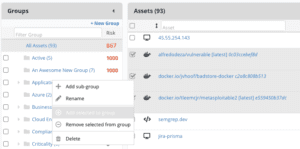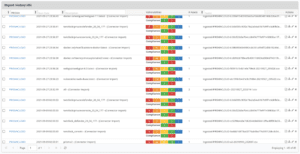Asset Management Enhancements
When you think of speed, many things may come to mind:
- A cheetah chasing down a gazelle in the Serengeti
- A bullet train
- A race car
In vulnerability management, using many of the common tools you may feel like you’re working in slow motion, and driving a prius instead of a race car. At Nucleus, we’re constantly striving to improve your experience and the speed of your vulnerability management process with features that actually make a difference in how you work at any size or scale. That’s why we’re so excited to announce improvements to two of the most heavily used pages in your Nucleus console.
Like a shot of adrenaline straight to the heart, the Asset Management page has been injected with something special to make it lightning fast. Until now, if your project was exceptionally large, with tens of thousands of assets or groups, the Asset Management page took longer than we’d have liked to load and perform actions. Now you too can feel like the mighty cheetah chasing down your gazelle of critical vulnerabilities on the rump.

With this latest update, we’ve improved page load and action performance by as much as 6000% (yes, really). This will stay true for a project of any size.
This update also includes the introduction of paging (view up to 5000 assets per page) for simpler table organization, and re-imagined group actions for easily adding or removing assets to/from groups at scale:

Import History Page
This page also needed a little bit of sprint training to load fast with tens of thousands of scan results, and now also loads extremely quickly regardless of the number of historical scans you’ve done (bring on the continuous monitoring!). We’ve also made some exciting changes to make it easier to navigate and investigate any previously imported scans.
Filters have been introduced for each column, enabling you to narrow down on the scan that you’re interested by source, scan date, description and filename, with a total scan number dynamically updated after a filter has been applied. Paging has also been introduced so that you can easily navigate to the scan that you’re looking for:

